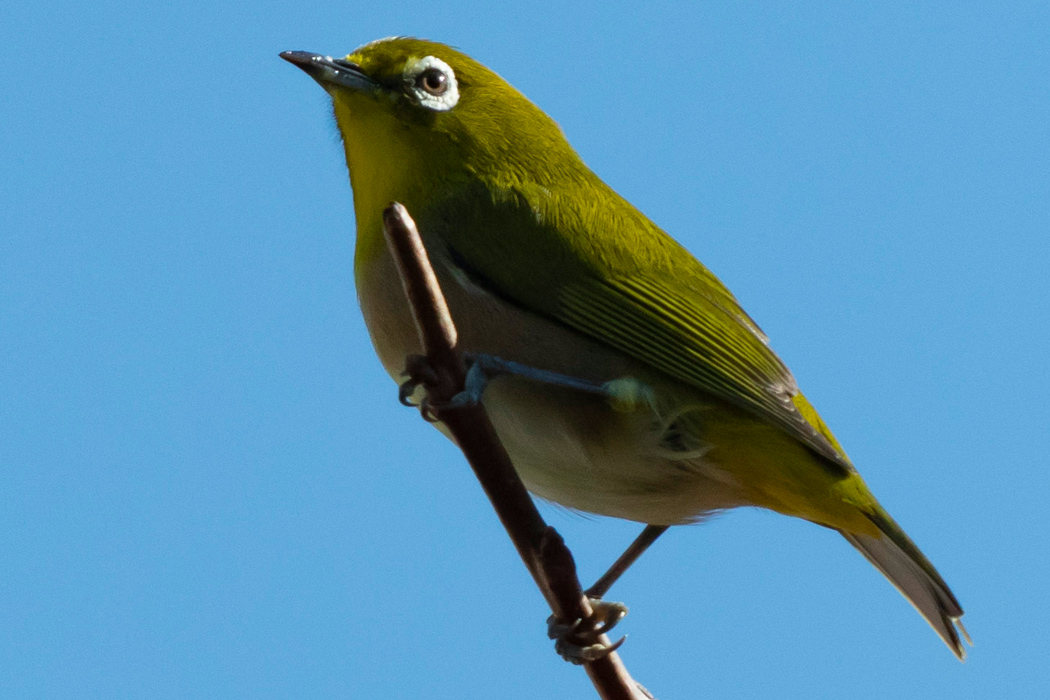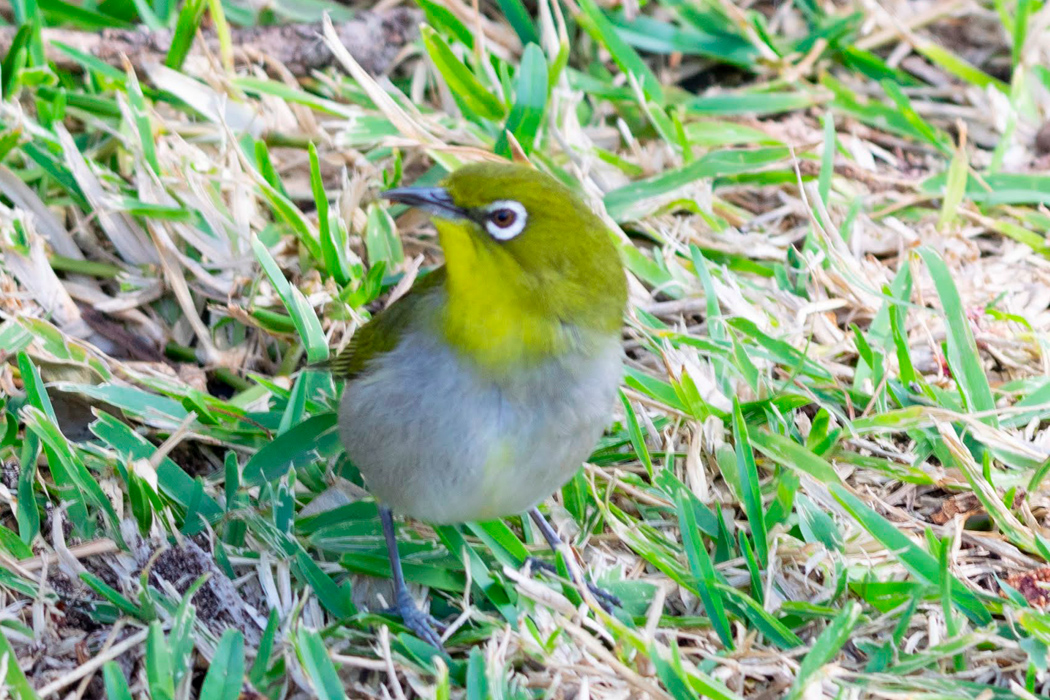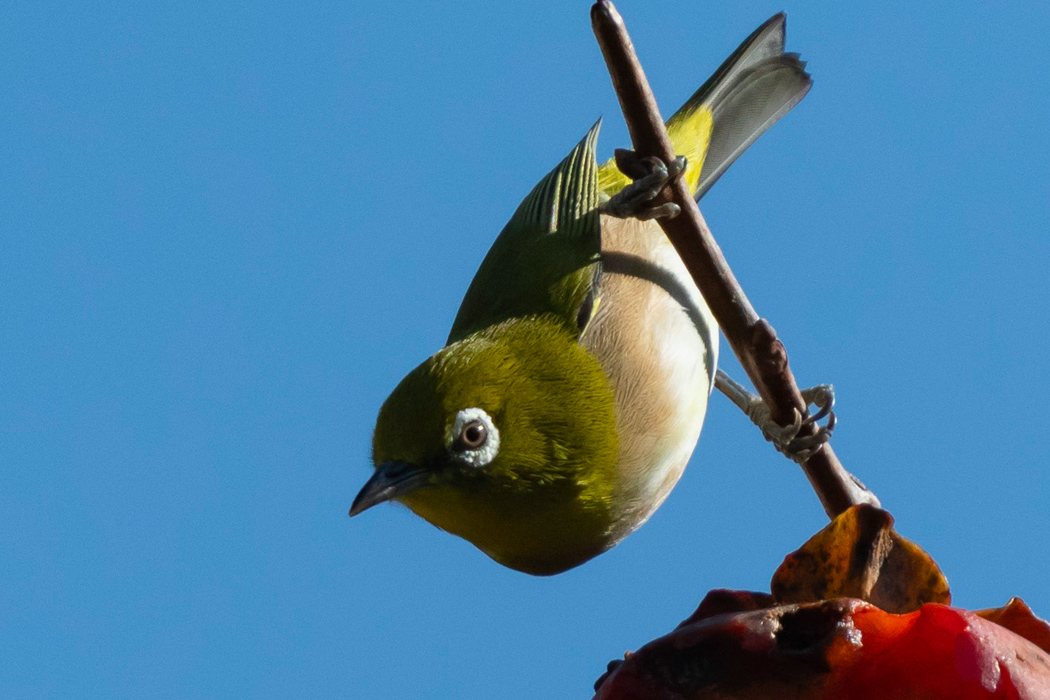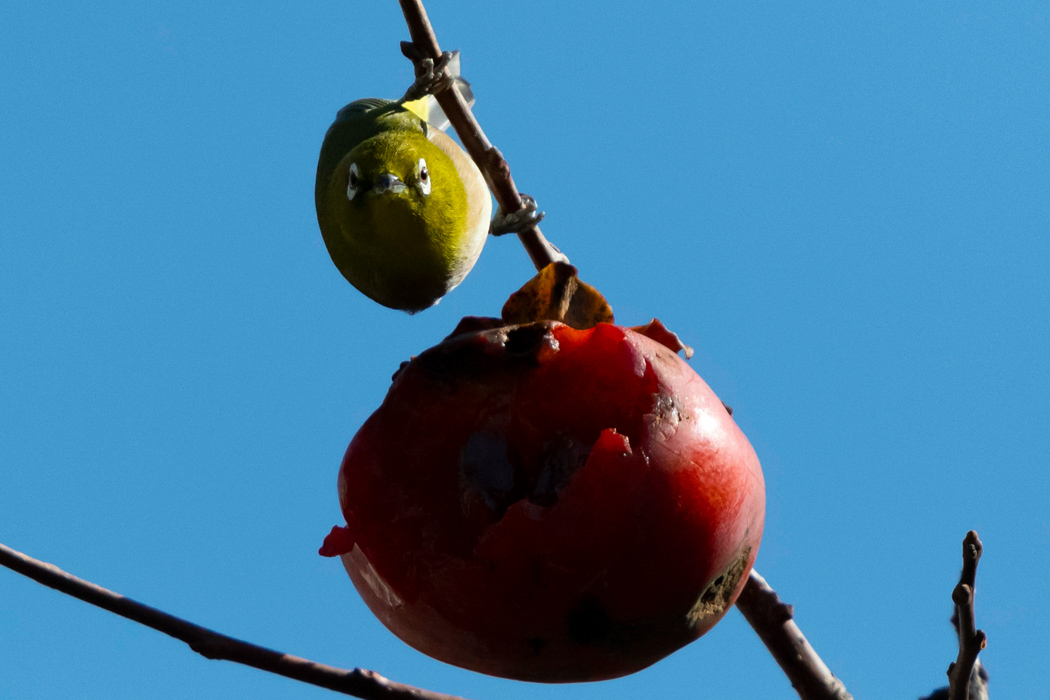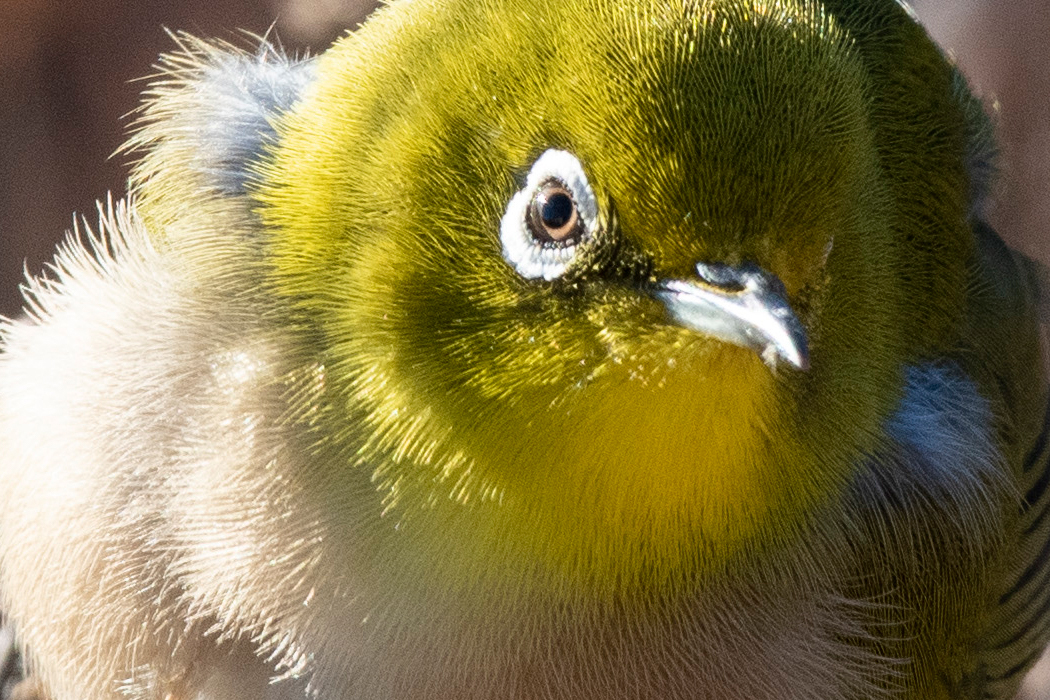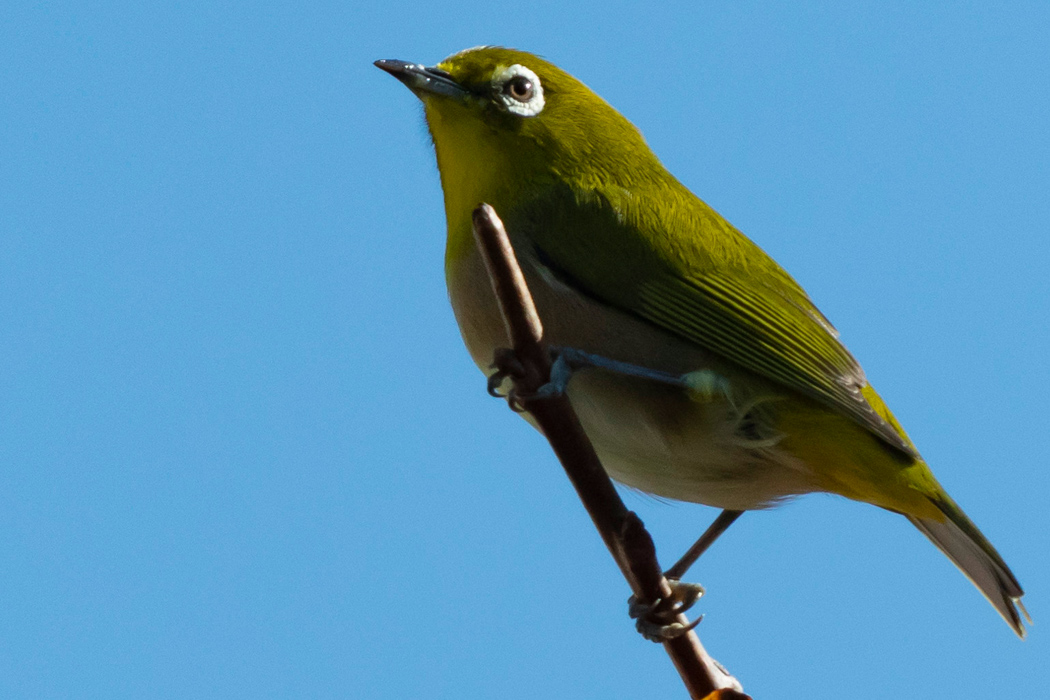
Japanese White-eye
Distinctive white eye ring.
| Scientific name | Zosterops japonicus |
| English name | Japanese White-eye |
| Japanese name | 目白 |
| Classification | Aves |
| Classification details | Passeriformes Zosteropidae |
| Full length | 12cm |
| Distribution | Widely distributed in East and Southeast Asia |
Characteristics
A small wild bird with a yellow-green body and a white eye ring. The belly is white to gray. The flight feathers darken toward the tip, and the legs and beak are lead-colored.
Calls
Call "Chi-chi" in a small voice. The cry of the white-eye is thin and small, although it sometimes sounds similar to the cry of the greenfinch. Even though you can't see it, it sometimes chirps in the branches of trees.
Origin of the name of the white-eye
The white-eye, which is characterized by the eye ring around its eyes, is given a similar name overseas. It is called "White-eye" in English and "Embroidery bird" in Chinese.
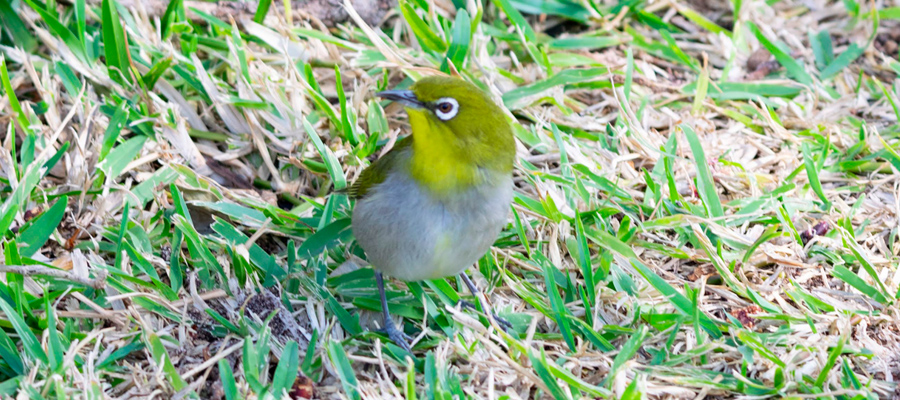
Ecology
It lives in broad-leaved forests from mountains to plains, but can also be seen in parks and residential areas. They eat anything, including fruit and flower nectar. In spring, they come to seek nectar from freshly blooming flowers. They live in pairs throughout the year and move through the trees in pairs.
They mostly live in trees, but the white-eye in the Ogasawara Islands seemed to come down to the ground relatively easily.
Habitat
Persimmon tree
I took a picture of a Japanese white-eye picking at a persimmon at a park in Hachioji City. They came in pairs and ate plenty of ripe persimmons.
In winter, the branches of trees become sparse, making it easier to observe white-eyes. When I was a child, I used to stick mandarin oranges in the branches of trees in my garden every winter and look forward to the arrival of white-eyes.
Foraging with a few birds
Several birds gathered to eat nuts in a park in Hachioji City. They were quarreling a little over the truth.
Video
The video of the white-eye.
They were arguing a little.
Pictures
Introducing a picture of Japanese White-eye.
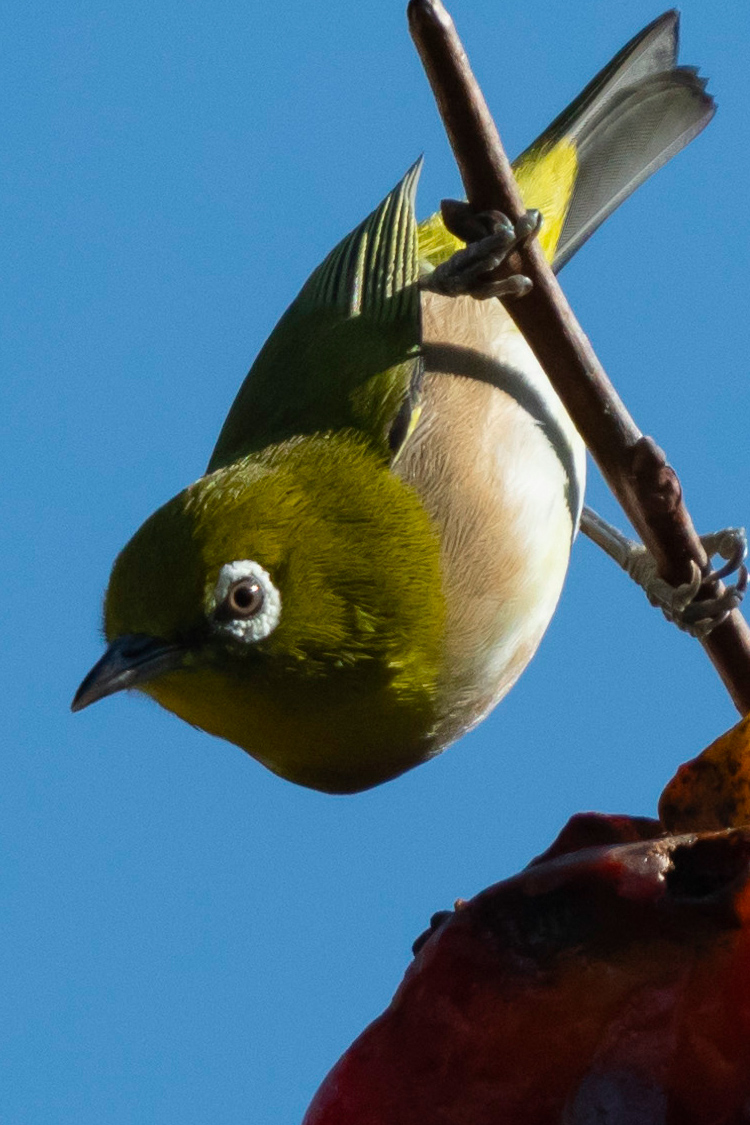
Picture book

Common Grass Yellow
Familiar butterfly with yellow wings.......ead more.

Indo-Pacific mantis
Can be seen until late autumn. It is characterized by the white stripes on the forewings.......ead more.

Chinese hwamei
Makes a beautiful chirping sound in the forest.......ead more.
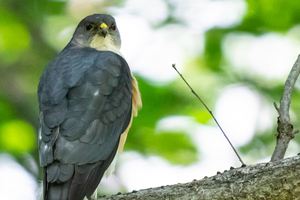
Japanese Sparrowhawk
A small hawk, not a high-pitched one.......ead more.
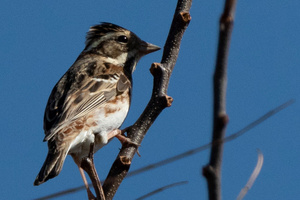
Rustic Bunting
Characterized by bristling feathers on the top of the head.......ead more.
